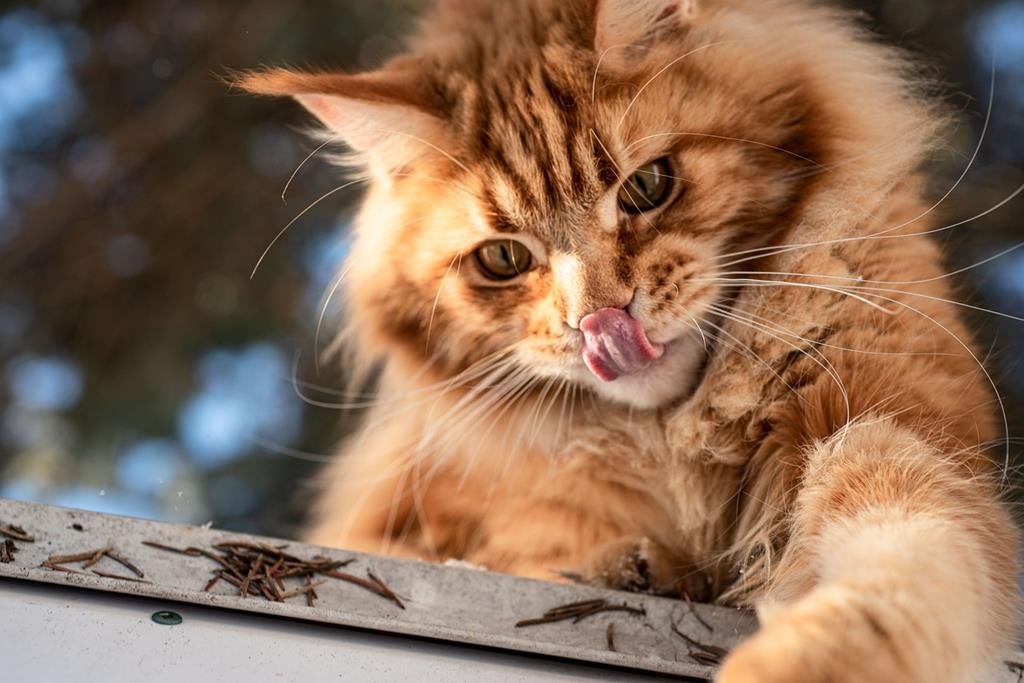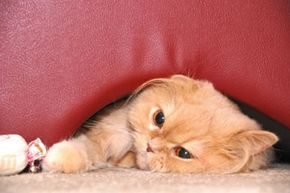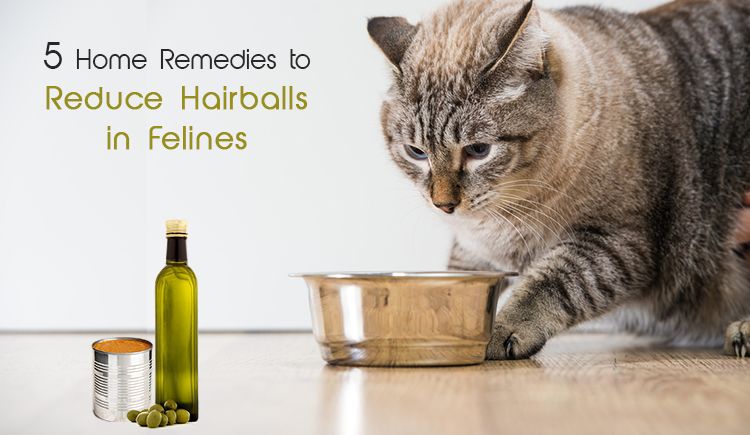Dealing with cat hairballs can be a common but frustrating issue. These pesky clumps can cause discomfort for your furry friend and stress for you. Cats naturally groom themselves, which leads to the ingestion of hair. Sometimes, this hair accumulates in their stomach, forming hairballs. While hairballs are a natural result of grooming, they can cause distress. Understanding how to manage and prevent hairballs is crucial for your cat’s health.
Home remedies can offer relief and help reduce the frequency of hairballs. In this blog post, we will explore simple, effective solutions you can try at home. These remedies aim to keep your cat comfortable and hairball-free. Stay tuned to learn more about keeping your feline friend happy and healthy.
Causes Of Cat Hairballs
Cat hairballs are a common issue that many cat owners face. Understanding the causes of cat hairballs can help manage and reduce their occurrence. Hairballs form when cats groom themselves and ingest loose fur. This fur can accumulate in their stomach and form a hairball. Learning why hairballs form and recognizing common triggers can assist in keeping your feline friend comfortable and healthy.

Why Hairballs Form
Cats are meticulous groomers. They use their tongues to clean their fur. During grooming, a cat’s rough tongue catches loose and dead hair, which is then swallowed. Most of this hair passes through the digestive system without issue. However, some hair remains in the stomach and binds together to form a hairball. Long-haired cats, such as Persians and Maine Coons, are more prone to hairballs due to their thick coats. Frequent grooming increases the amount of hair ingested, which can lead to more hairballs.
Common Triggers
Several factors can trigger the formation of hairballs:
- Excessive Grooming: Cats that groom themselves excessively ingest more hair, increasing the likelihood of hairballs.
- Shedding: During shedding seasons, cats lose more hair, which they may ingest while grooming.
- Diet: A diet low in fiber can slow down the digestive process, causing hair to accumulate.
- Stress: Stress or anxiety can lead to over-grooming, resulting in more hairballs.
Recognizing these triggers and taking steps to mitigate them can help reduce the frequency of hairballs. Providing a balanced diet, regular grooming, and a stress-free environment can make a significant difference in your cat’s health.

Credit: animals.howstuffworks.com
Identifying Hairball Symptoms
Hairballs are a common issue for cat owners. Knowing the symptoms can help you address the problem early. Identifying hairball symptoms in your cat is crucial for their health. Watch for both physical signs and behavioral changes.
Physical Signs
Cats often display noticeable physical signs when dealing with hairballs. These signs can include:
- Frequent coughing or hacking sounds
- Vomiting, especially of cylindrical-shaped hair masses
- Gagging or retching without producing anything
- Reduced appetite
Pay attention to your cat’s vomit. It may contain hair, bile, or food. Regular grooming can reduce the frequency of these symptoms. Brush your cat’s fur daily to help remove loose hair.
Behavioral Changes
Behavioral changes can also indicate hairball issues. Look for these changes in your cat’s behavior:
- Increased grooming or licking
- Lethargy or reduced activity levels
- Restlessness or discomfort
- Frequent attempts to vomit or cough
Cats may groom themselves more to remove trapped hair. This can worsen the problem. Monitor your cat’s behavior closely. If you notice persistent symptoms, consult your vet.
Understanding these signs can help you provide better care. Early detection and treatment can prevent complications.
Preventive Measures
Preventing hairballs in cats is essential for their comfort and health. Taking some preventive measures can significantly reduce the frequency and severity of hairballs. Let’s explore a few effective strategies.
Regular Grooming
Regular grooming is crucial in reducing hairballs. Brush your cat daily to remove loose fur. This practice minimizes the fur they ingest while grooming themselves. Short-haired cats need grooming too. Use a brush suitable for your cat’s fur type.
Regular grooming sessions can also strengthen your bond with your cat. Make grooming a pleasant experience with treats and praise. Consistency is key for the best results.
Diet Adjustments
Diet plays a vital role in preventing hairballs. Opt for cat food designed to reduce hairballs. These foods contain more fiber, aiding digestion and passing hair through the system.
Include more moisture in your cat’s diet. Wet food helps in smooth digestion and reduces hairball formation. Ensure your cat has access to fresh water at all times.
Consider adding a teaspoon of canned pumpkin to your cat’s meals. Pumpkin is rich in fiber and can help with digestion. Always consult your vet before making significant dietary changes.
| Preventive Measure | Benefit |
|---|---|
| Regular Grooming | Reduces loose fur ingestion |
| Hairball-Reducing Food | Increases fiber intake |
| Wet Food | Improves digestion |
| Canned Pumpkin | Boosts fiber intake |
Dietary Solutions
Cat hairballs can be a concern for many pet owners. One effective way to manage hairballs is through dietary changes. Proper nutrition can help your cat reduce the formation of hairballs and improve their overall health.
High-fiber Foods
Including high-fiber foods in your cat’s diet can help. Fiber aids in digestion and helps move hair through the digestive tract. This prevents hair from forming into hairballs.
- Pumpkin is an excellent high-fiber option.
- Sweet potatoes also provide a good source of fiber.
- Green beans can be added to their meals for extra fiber.
Introduce these foods gradually to your cat’s diet. Start with small amounts and monitor their reaction.
Specialized Cat Food
Many brands offer specialized cat food designed to reduce hairballs. These foods contain ingredients that aid in the movement of hair through the digestive system.
| Brand | Features |
|---|---|
| Brand A | High in fiber, contains Omega-3 fatty acids |
| Brand B | Contains natural lubricants, added vitamins |
| Brand C | Rich in protein, balanced nutrients |
Choose a brand that suits your cat’s taste and nutritional needs. Always consult with your vet before making significant changes to your cat’s diet.
Both high-fiber foods and specialized cat food can help manage hairballs. These dietary solutions are easy to implement and can make a big difference in your cat’s well-being.
Home Remedies
Cat hairballs are a common problem for many cat owners. They occur when cats groom themselves and swallow loose hair, which accumulates in their stomachs. While hairballs are generally not harmful, they can cause discomfort for your furry friend. Fortunately, there are several home remedies to help prevent and manage hairballs. Below are some effective and easy-to-follow solutions.
Pumpkin Puree
Adding pumpkin puree to your cat’s diet can help with hairballs. Pumpkin is high in fiber, which aids in digestion and helps pass hair through the digestive tract. Here is how you can introduce pumpkin puree into your cat’s diet:
- Start with 1 teaspoon of plain, unsweetened pumpkin puree.
- Mix it into your cat’s regular food.
- Feed this mixture once a day.
Pumpkin is not only beneficial for hairball prevention but also supports overall digestive health.
Olive Oil
Olive oil is another excellent home remedy for cat hairballs. The oil lubricates the digestive system, helping hair pass through more easily. Here’s how to use olive oil:
- Add 1 teaspoon of olive oil to your cat’s food once a week.
- Ensure that it is well-mixed so your cat cannot separate it.
Olive oil not only helps with hairballs but also keeps your cat’s coat shiny and healthy.

Credit: www.holistapet.com
Hydration Importance
Ensuring that your cat stays hydrated is crucial for preventing hairballs. Adequate hydration helps in digestion and reduces the formation of hairballs. Cats naturally tend to drink less water, so it’s important to encourage them to drink more.
Encouraging Water Intake
Getting your cat to drink more water can be challenging. Here are some effective tips:
- Fresh Water: Always provide fresh water. Change it twice a day.
- Multiple Bowls: Place water bowls in various locations around your home.
- Running Water: Cats love running water. Consider using a cat water fountain.
- Ice Cubes: Add ice cubes to their water. Cats find this enticing and playful.
Wet Cat Food Benefits
Wet cat food can significantly increase your cat’s water intake. Here are some reasons why wet food is beneficial:
| Benefit | Description |
|---|---|
| Higher Moisture Content | Wet food contains 70-80% water, aiding in hydration. |
| Improves Digestion | Helps in smoother digestion, reducing hairball formation. |
| Palatable | Most cats prefer the taste of wet food over dry food. |
Adding wet food to your cat’s diet can be a simple yet effective way to ensure they stay hydrated.
When To Visit The Vet
Home remedies for cat hairballs can often provide relief. But there are times when a visit to the vet becomes necessary. Knowing when to seek professional help is crucial for your cat’s health and well-being.
Severe Symptoms
If your cat shows severe symptoms, it’s time to visit the vet. Watch for the following signs:
- Continuous vomiting
- Lack of appetite
- Weight loss
- Fatigue or lethargy
These symptoms can indicate something more serious. They may not be just hairballs. Immediate vet care can prevent further complications.
Persistent Hairballs
Persistent hairballs are another reason to see the vet. If your cat has frequent hairballs despite home remedies, consult a professional. Persistent hairballs can cause:
- Intestinal blockages
- Digestive issues
- Discomfort and pain
A vet can provide specialized treatments. They can help manage and reduce hairball issues effectively.
Long-term Hairball Management
Long-Term Hairball Management is essential for keeping your cat healthy and happy. Hairballs can be a nuisance and even pose health risks. By implementing some routine care tips and promoting healthy lifestyle habits, you can manage hairballs effectively. Here are some practical strategies to help you with long-term hairball management.
Routine Care Tips
Regular grooming is key. Brush your cat’s fur daily to reduce shedding. This helps remove loose hair that might otherwise end up in your cat’s stomach. Choose a brush suitable for your cat’s coat type.
Consider using a special hairball formula cat food. These foods often contain added fiber to help move hair through the digestive system. Consult your vet for the best options.
Keep your cat hydrated. Always provide fresh water. Hydration helps the digestive system function smoothly, reducing the risk of hairballs.
Healthy Lifestyle Habits
Encourage play and exercise. Physical activity helps keep your cat’s digestive system active. Use toys and interactive play to keep your cat moving.
Maintain a healthy diet. A balanced diet supports overall health, including the digestive system. Ensure your cat gets the right nutrients, including fiber.
Monitor your cat’s behavior. Notice any excessive grooming or other signs of stress. Stress can increase grooming and hairball formation.
Create a comfortable environment. A stress-free home can reduce excessive grooming. Provide a cozy space for your cat to relax.

Credit: www.canadapetcare.com
Frequently Asked Questions
What Causes Hairballs In Cats?
Hairballs in cats are caused by grooming. When cats groom themselves, they ingest loose fur. This fur accumulates in the stomach, forming hairballs.
How Can I Prevent Hairballs In Cats?
To prevent hairballs, brush your cat regularly to remove loose fur. Also, provide a high-fiber diet to aid digestion and reduce hairball formation.
Are Hairballs Dangerous For Cats?
Hairballs can be dangerous if they cause blockages. If your cat frequently vomits or shows signs of distress, consult a vet immediately.
What Are Natural Remedies For Cat Hairballs?
Natural remedies include feeding your cat a teaspoon of olive oil or adding fiber-rich foods like pumpkin to their diet. Regular grooming also helps.
Conclusion
Preventing cat hairballs is easy with home remedies. Regular grooming reduces loose fur. Adding fiber to your cat’s diet helps digestion. Coconut oil can also aid in smoother bowel movements. Ensure your cat stays hydrated. Try these tips and observe improvements.
Your cat will feel happier and more comfortable. Always consult your vet for persistent issues. These remedies offer natural solutions for hairball problems. Keep your feline friend healthy and hairball-free.